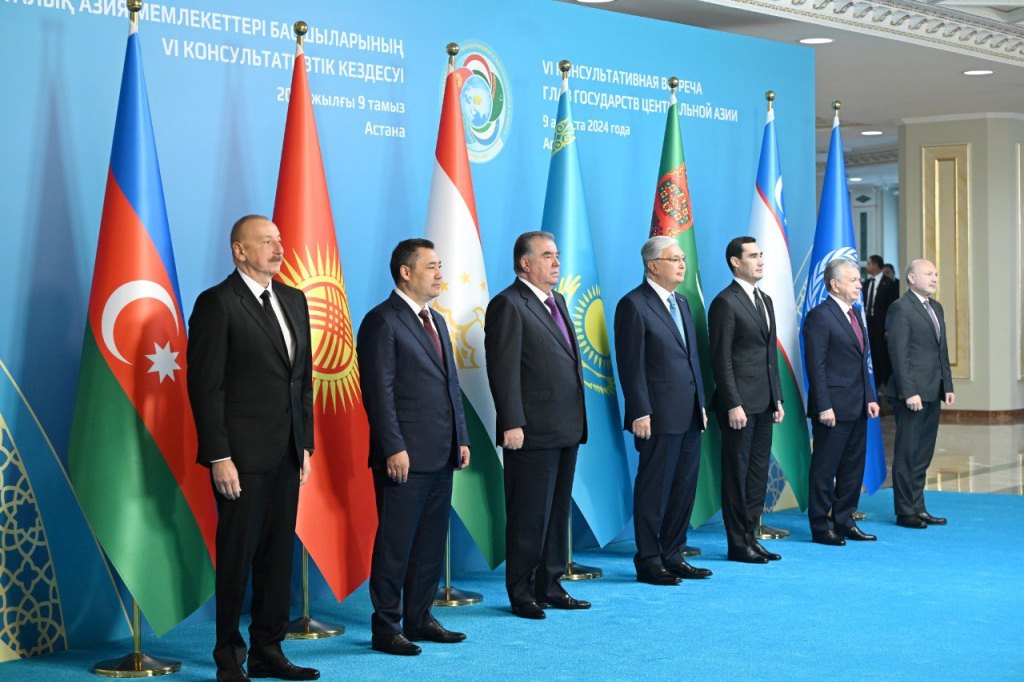Tajik President Emomali Rahmon has proposed to hold the first meetings ministers of industry from Central Asia’s nations next year in Dushanbe. This initiative was announced at the 6th Consultative Meeting of the Heads of State of Central Asia.
The presidents of Kazakhstan, Kyrgyzstan, Tajikistan, Turkmenistan, and Uzbekistan convened in Kazakhstan’s capital, Astana, on August 9 to hold the sixth consultative meeting of the leaders of Central Asian states.
The Tajik president’s official website says that speaking at the meeting, Emomali Rahmon drew the attention of the heads of state of Central Asia to issues of cooperation for the further expansion of trade and economic relations, the development of separate programs in the fields of agriculture, industry and the introduction of new technologies, the implementation of large transport, infrastructure and logistics projects, the effective use of hydropower resources, the enhancement of cultural and humanitarian spheres and other important issues.

Tajik leader reportedly expressed his satisfaction with the progress of cooperation in the region during the last six years, calling it all the result of the strong political will of the leaders of the countries.
He stated that that in the current conditions of rapid changes in the world, it is necessary to form a unified vision of the future of Central Asia.
Rahmon emphasized that in the past consultative meetings more than a hundred suggestions and initiatives were put forward, which are being considered and have a long-term nature. The implementation of each of them increases the potential for joint development.
Over the last five years, the trade turnover in the region has reportedly increased by more than 80 percent and exceeded 10 billion US dollars.

Tajik president stated that if the existing capacity is effectively used, the turnover in the region can reach 20 billion US dollars in the near future.
Tajikistan proposed to hold the first meeting of the ministers of industry of the Central Asian countries next year in Dushanbe.
Strengthening cooperation in the fields of e-commerce, digital technologies and energy, especially "green" energy, was called a key basis for the development of "green" economy in the region.
Against the background of intensifying global threats and dangers, Rahmon proposed to design new effective forms of cooperation in the field of security.
He reportedly considered it necessary to establish mechanisms of close cooperation of law enforcement agencies.
The Kazakh president’s office says Kazakh President Kassym-Jomart Tokayev greeted his counterparts and stressed that the regular meetings of the regional leaders indicate the Central Asian states' commitment to strengthen “centuries-long ties of friendship and further develop cooperation between the neighboring nations.”
“We are jointly shaping a new image of Central Asia as a region of great opportunities, looking to the future,” Tokayev, told his fellow regional leaders. “Given the combined potential of our countries, we can make a significant contribution to the implementation of the Sustainable Development Agenda.”
Uzbek President Shavkat Mirziyoyev reportedly echoed those sentiments, asserting that “Central Asia is becoming a space of good-neighborliness, mutually beneficial cooperation and sustainable development.”
Kazakhstan and Uzbekistan, the region’s two largest economies, are taking the lead in promoting regional economic cooperation and integration. At a one-on-one meeting August 8 that preceded the Astana regional gathering, Tokayev and Mirziyoyev reportedly signed over a dozen documents and agreements, including several aimed at streamlining border controls and procedures, and boosting trade in the agricultural sector.
Presidents Sadyr Japarov of Kyrgyzstan, Emomali Rahmon of Tajikistan, Serdar Berdymukhammedov of Turkmenistan, and Shavkat Mirziyoyev of Uzbekistan arrived in Astana on August 8.
Azerbaijani President Ilham Aliyev and Kakha Imnadze, head of the UN Regional Center for Preventive Diplomacy for Central Asia, attended the meeting as guests.
The Central Asia presidents signed several documents, including a joint statement on the results and the Central Asia -- 2040 development concept, outlining the priorities for regional convergence, primarily aimed at expanding five-party interaction and strengthening Central Asia's international subjectivity.
Besides, based on the results of the meeting, they also signed the Roadmap for the development of regional cooperation for 2025-2027, the Plan of industrial cooperation of Central Asian states for 2025-2027, the Memorandum of understanding (MoU) on the development of transport and logistics centers in Central Asian countries, the Astana Communique of the sixth Consultative Meeting of Heads of State of Central Asia, and the Communique on the results of the first meeting of energy ministers of Central Asian countries.







